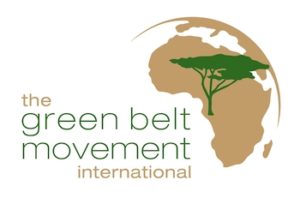
*On this date in 1977, we celebrate the founding of the Green Belt Movement (GBM). They are an indigenous, grassroots, non-governmental organization based in Nairobi, Kenya.
GBM takes a holistic approach to development by focusing on environmental justice, conservation, community development, and capacity building. Professor Wangari Maathai established the organization under the auspices of the National Council of Women of Kenya; she strongly supported Environmental Justice.
Before the Green Belt Movement's founding, specifically during the 1970s, Kenya had a restricted political opportunity structure because the government was politically repressive. The Kenyan government was dominated by men and their patriarchal and repressive views, which created many issues for women. Many Kenyan women struggled with feeding their families and accessing natural resources (water, wood). Moreover, the women had no legal protection or say regarding politics in Kenya.
Women were so repressed and treated so poorly that they weren't allowed to be in government or sit in on political meetings. Eventually, changes occurred within Kenya and its government. The Green Belt Movement changed how women were treated, excluded from, and used in Kenya. The framing of the Green Belt Movement as a non-threatening environmental conservation effort enormously impacted the government and communities when many other forms of activism were seen as threats to the government. However, by encouraging women to question their place and challenge social and political institutions that keep women compliant, the Green Belt Movement was eventually founded officially.
According to an annual report, ‘‘the mission of GBM is to mobilize community consciousness for self-determination, justice, equity, reduction of poverty, and environmental conservation, using trees as the entry point.’’ The Green Belt Movement also aims to organize women in rural Kenya to plant trees, combat deforestation, restore their main sources of fuel for cooking, generate income, and stop soil erosion. Maathai incorporated advocacy and empowerment for women, eco-tourism, and overall economic development into the Green Belt Movement.
In the early 21st century, the Green Belt Movement is vibrant and has succeeded in achieving many of its goals. It also provides a wide range of protection to natural resources and ecosystems worldwide. The protection of the environmental and natural resources was achieved through the GBM practices of tree planting, soil conservation measures, sustainable management of the local environment and economy, and the protection/boosting of local livelihoods (women and children).
In addition to helping the environment and local communities, the movement has also succeeded in helping local women generate their sources of income. The GBM has helped women generate their income through the production of seed sales. Moreover, the Movement has also successfully educated thousands of low-income women about forestry and has created about 3,000 part-time jobs. The movement has even succeeded in reaching and spreading its roots throughout a wide range of countries. They continue to spread their message and help to communities and women worldwide.